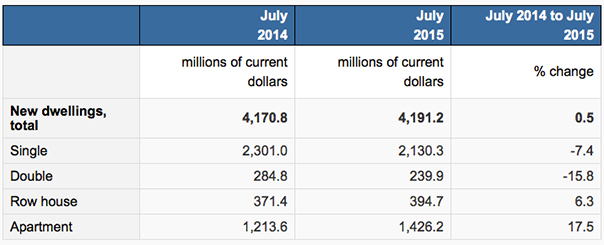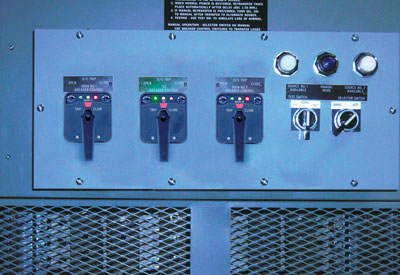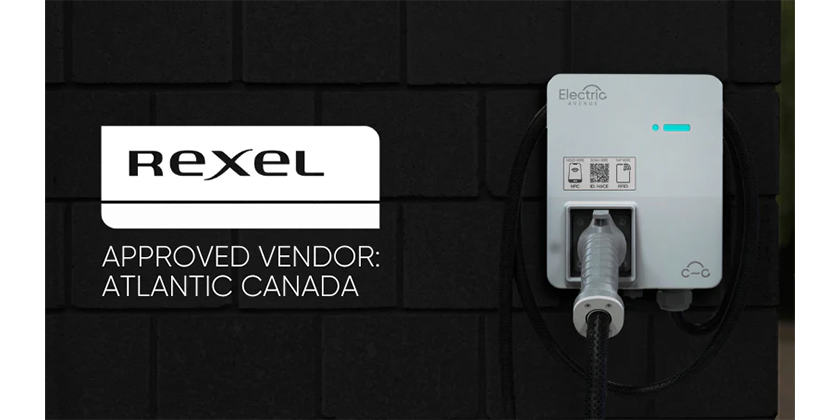New Housing Construction Up 0.5% in July

Spending on new housing construction was $4.2 billion in July, up 0.5% from the same month a year earlier.Nationally, the gain came from higher investment in apartment and apartment-condominium building construction, which increased 17.5% to $1.4 billion and also, to a lesser extent, in row house construction, which rose 6.3% to $395 million.
Table 1: Investment in new housing construction, by type of dwelling
At the provincial level, increases were recorded in three provinces, led by British Columbia, followed by Ontario and Nova Scotia.
In British Columbia, investment in new housing construction rose 18.9% to $731 million in July compared with July 2014. The growth was mainly attributable to higher spending on apartment and apartment-condominium building construction, as well as single-family dwelling construction.
In Ontario, spending on new housing construction totalled $1.5 billion in July, up 7.9% from July 2014. The increase was a result of higher construction spending on single-family dwellings, which rose 13.2% to $871 million. Increased investment in apartment and apartment-condominium building construction and row house construction also contributed to the advance.
In Nova Scotia, investment grew 27.8% to $61 million in July compared with the same month a year earlier. Higher construction spending on apartment and apartment-condominium buildings was responsible for July’s advance as investment in the other dwelling types declined.
The largest decreases were recorded in Quebec, Saskatchewan and Alberta.
Table 2: Investment in new housing construction, by province and territory
Source: Statistics Canada, http://www.statcan.gc.ca/daily-quotidien/150922/dq150922b-eng.htm?cmp=mstatcan.

















